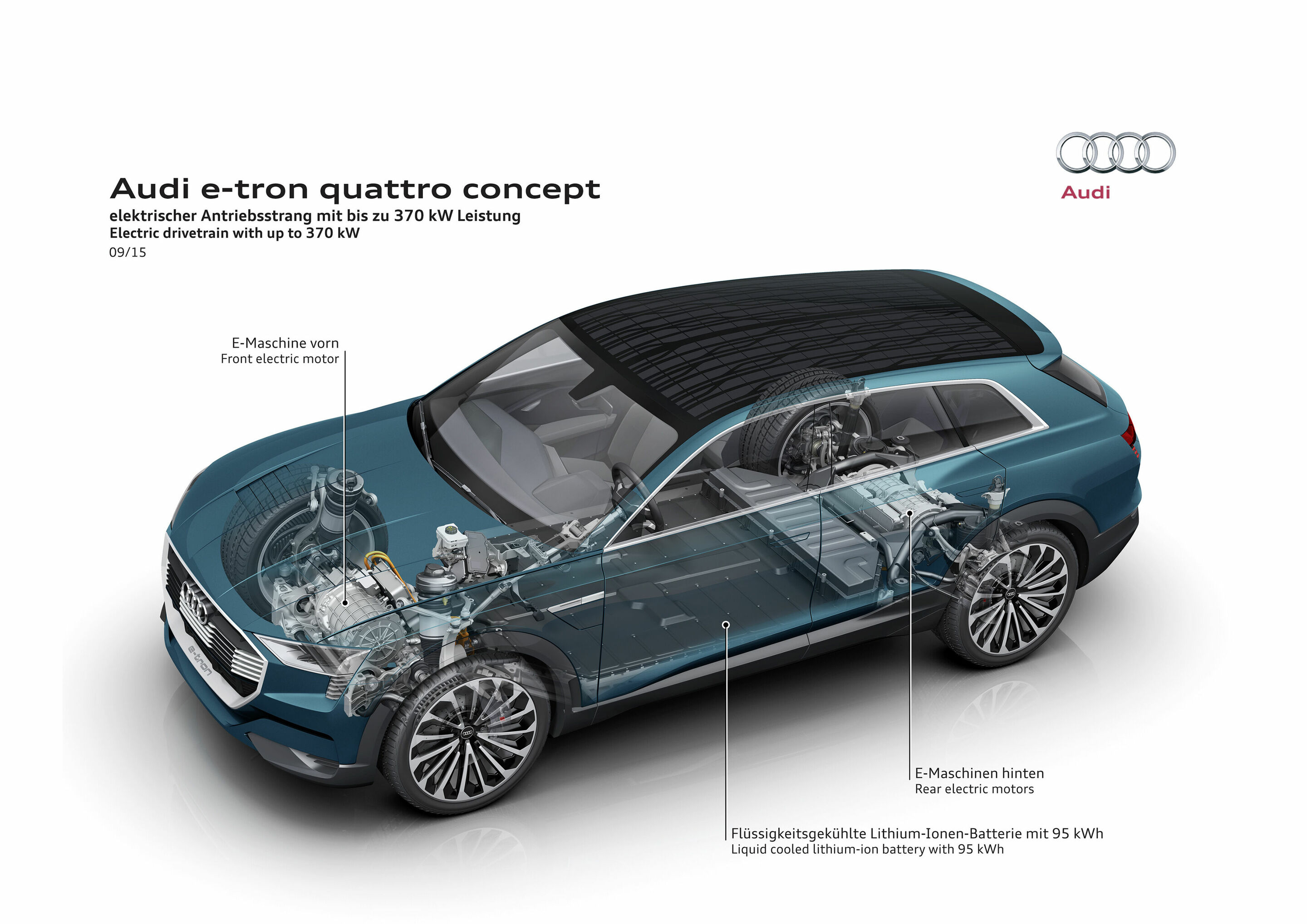Ideal installation position: The lithium-ion battery
Back to overviewThe technology study’s lithium-ion battery is positioned between the axles below the passenger compartment. This installation position provides for a low center of gravity and a balanced axle load distribution of 52:48 (front/rear). And that gives the sporty SUV outstanding driving dynamics and driving safety compared with other vehicles in the segment. The large battery block is bolted to the floor structure of the Audi e-tron quattro concept. Thanks to its modular design, the battery is in principle also suitable for other automobile concepts.
The liquid-cooled battery has an energy capacity of 95 kWh. A full charge provides for a range of over 500 kilometers (310.7 mi) in the NEDC. The Combined Charging System with two connectors enables charging with alternating current (AC) and direct current (DC). With direct current and the charging power of 150 kW targeted by Audi, the large battery can store enough energy for over 400 kilometers (248.5 mi) in around just 30 minutes.
With its geometry and slightly inclined installation position, the innovative charging socket is particularly ergonomic. Alternatively, the Audi e-tron quattro concept can be charged contactlessly by induction, using Audi Wireless Charging (AWC) technology. This involves placing a charging plate with integrated spool on the parking space and connecting it to the mains supply. The piloted parking system positions the Audi e-tron quattro concept over the charging plate with pinpoint accuracy. The charging process then begins automatically. The magnetic alternating field induces an AC current in the secondary spool mounted across the gap in the underside of the car. The AC current is converted to DC by the vehicle’s power electronics and the battery is charged with up to 11 kilowatts of power.
Once the battery is fully charged, the process ends automatically. The Audi Wireless Charging technology is over 90% efficient, almost as effective as charging via a cable. The alternating field does not pose any risk to people or animals; it only builds up when a car is positioned above the induction charging plate. Drivers can monitor the charging process on their smartphone using an app from the Audi connect portfolio. All charging and climate control functions can be controlled remotely with this app.
Completely covered with solar cells, the 1.98 meter (6.5 ft) solar roof is also integrated into the technology study’s energy management system. It is the world’s largest module installed in an automobile. Its entire surface is covered in solar cells – the solar roof of the Audi e-tron quattro concept thus achieves the greatest solar output by far in the automotive sector. It feeds electricity at up to 320 watts into the battery as soon as the Audi e-tron quattro concept is parked or driven in the sun. In the central European climate, it can contribute up to 1,000 kilometers (435.0 mi) of additional range per year – another top value. In the summer, the solar roof produces enough power to run the auxiliary heating for the interior, to provide a pleasant temperature inside the vehicle before the journey even starts.
The heat pump also contributes to the efficiency of the concept study. It uses the waste heat of the electrical components to climatize the interior and is thus a central component of the thermal management system.
The equipment, data and prices specified in this document refer to the model range offered in Germany. Subject to change without notice; errors and omissions excepted.
